Manufacturer: MSI
UK price (as reviewed): £459.99 (inc. VAT)
US price (as reviewed): $519.99 (exc. tax)
Given that the RTX 2070 is the cheapest means of obtaining RTX hardware, it makes sense for board partners to have offerings that are as close to the MSRP as possible, which here in the UK is £460, and this is especially true given how awesome the Founders Edition is, as competing with that card on price puts you in dangerous territory. Such cards won’t feature overclocks or fancy features – take Palit’s RTX 2070 Dual, for example – but they may still tempt that slice of the market that craves RTX hardware but not at a cost of £800 or even £1,200, however small that slice may be.

The MSI RTX 2070 Armor, then, is a rather different card to the RTX 2070 Gaming Z that we’ve already seen from the company. Coming in at £120-£140 less expensive, it uses the non-binned variant of the TU106 GPU (TU106-400) and ships with both the core and memory at stock speeds. An OC version of the same card, probably using the more expensive binned GPU (TU106-400A), is also available for £525 or thereabouts.
The black and white colour scheme keeps things simple and neutral, which is important in this RGB-crazy world we inhabit. Speaking of, the MSI/Dragon logo section along the top edge is RGB-illuminated, and as you’d expect this is compatible with MSI’s Mystic Light software.
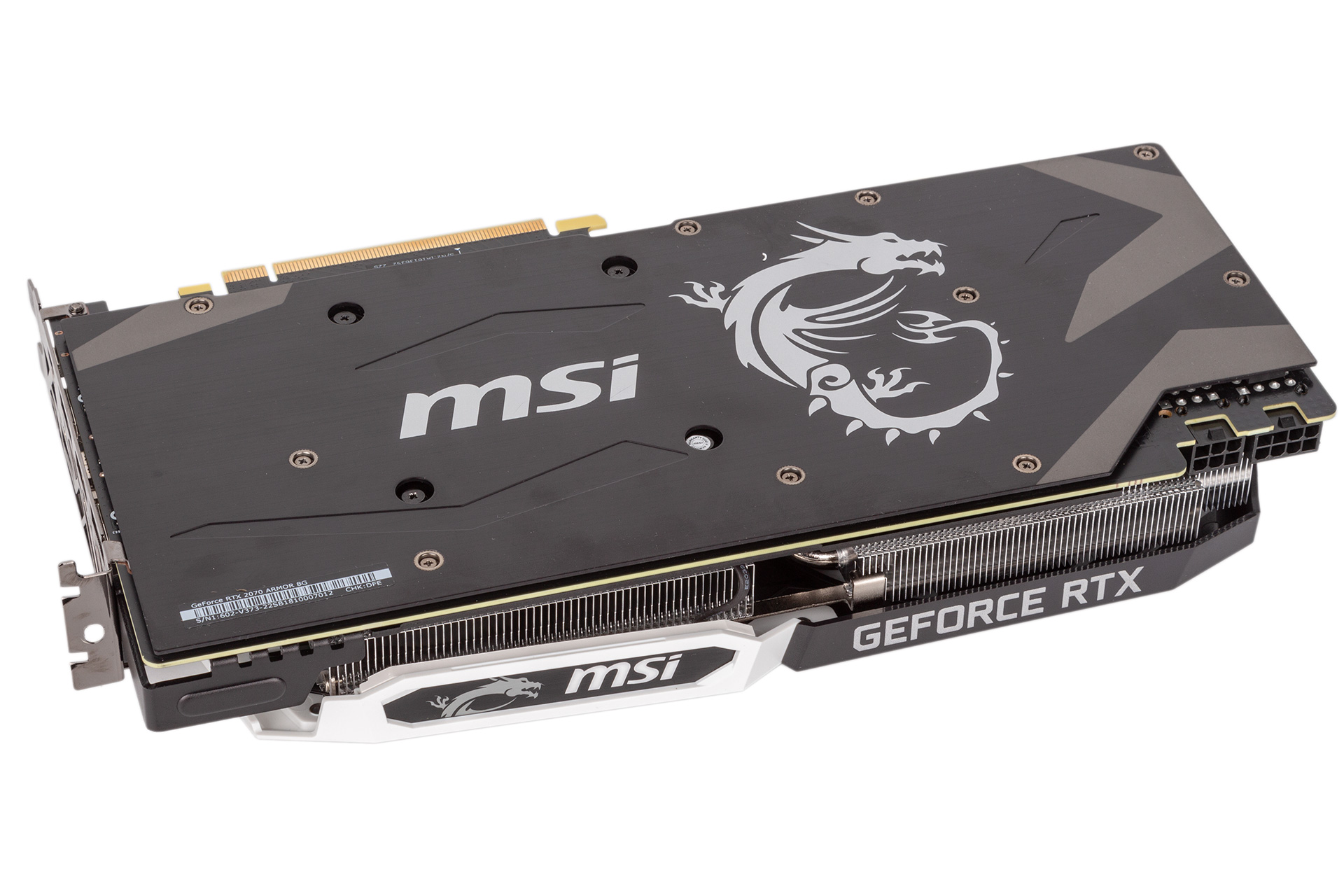
The cooler shroud is plastic, but overall build quality is still high thanks in part to a bracing bracket on the PCB and of course the full-cover metal backplate. The card is long, tall, and exceeds two slots, so it’s important to ensure you can accommodate it properly. Some sort of anti-sag mechanism might be worth looking at too, as the card weighs over 1.1kg and doesn’t come with one or indeed any other accessory.
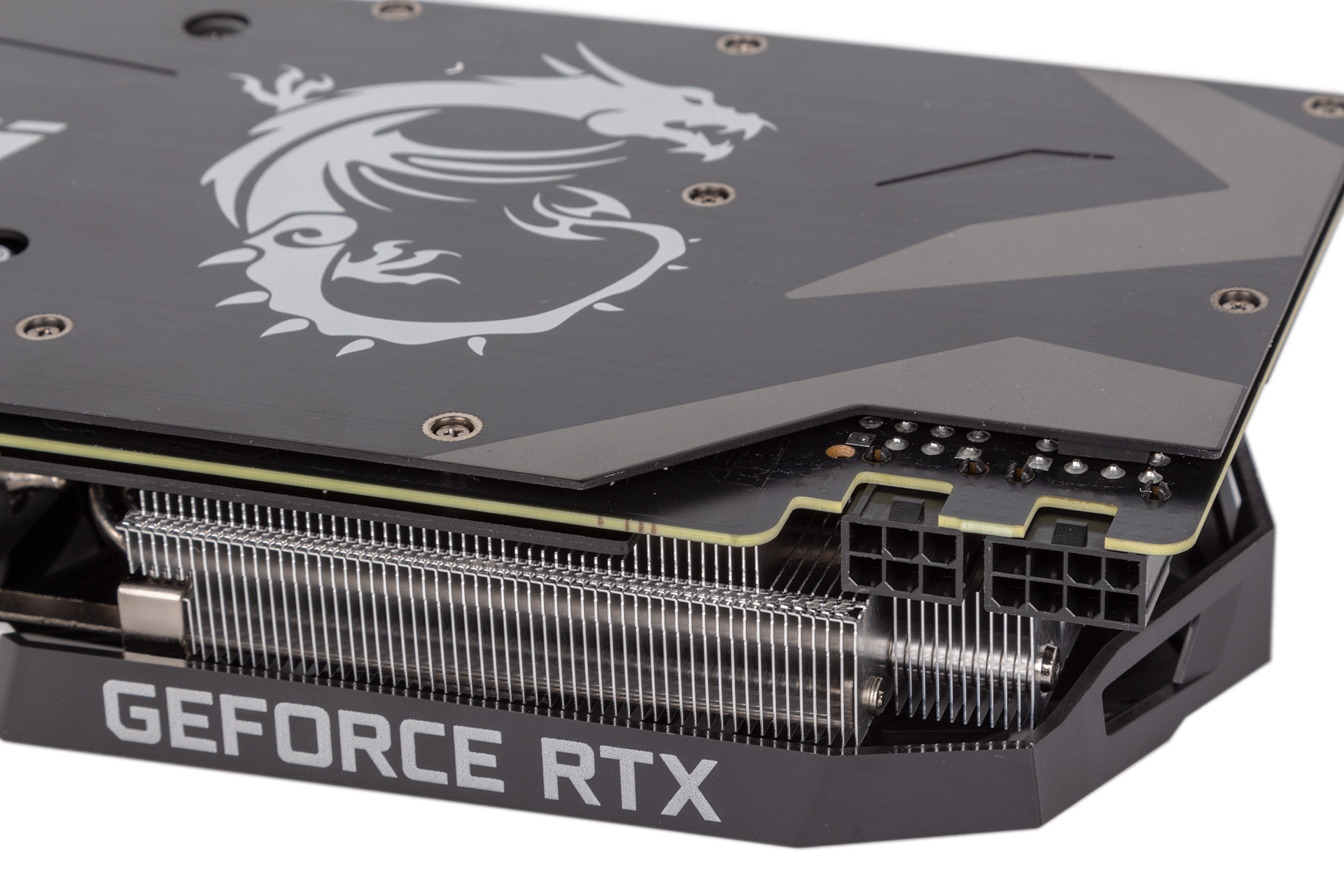
Despite only being rated as a 175W card, the design incorporates both a six-pin and an eight-pin PCIe power connector, meaning total power headroom with the PCIe slot delivery included amounts to 300W. That’s overkill, but most PSUs will have the necessary connectors these days.
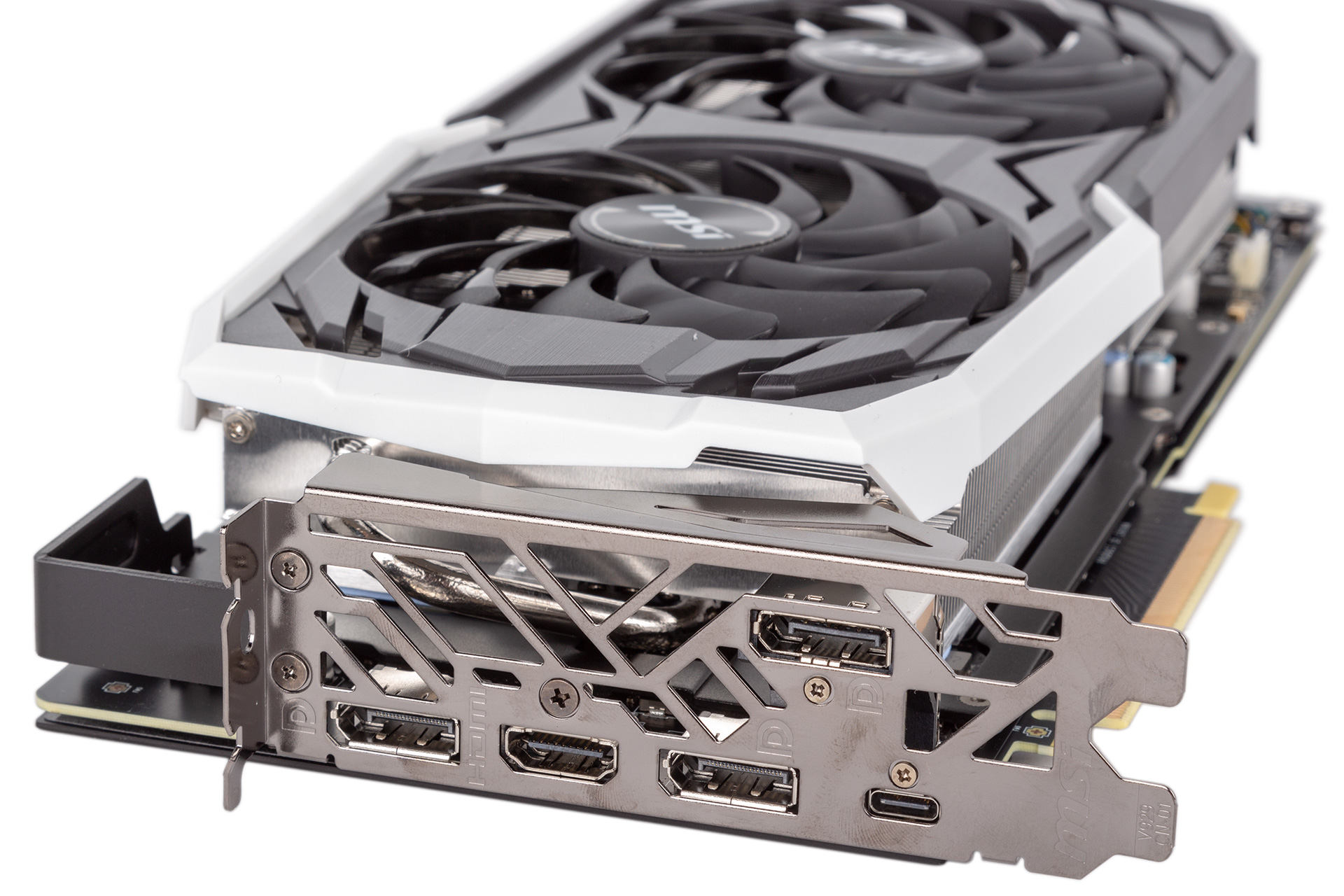
The display outputs fall in line with the reference specifications – we haven’t seen any board partner deviate from these, and we can’t see much of a reason to do so, so all good there.
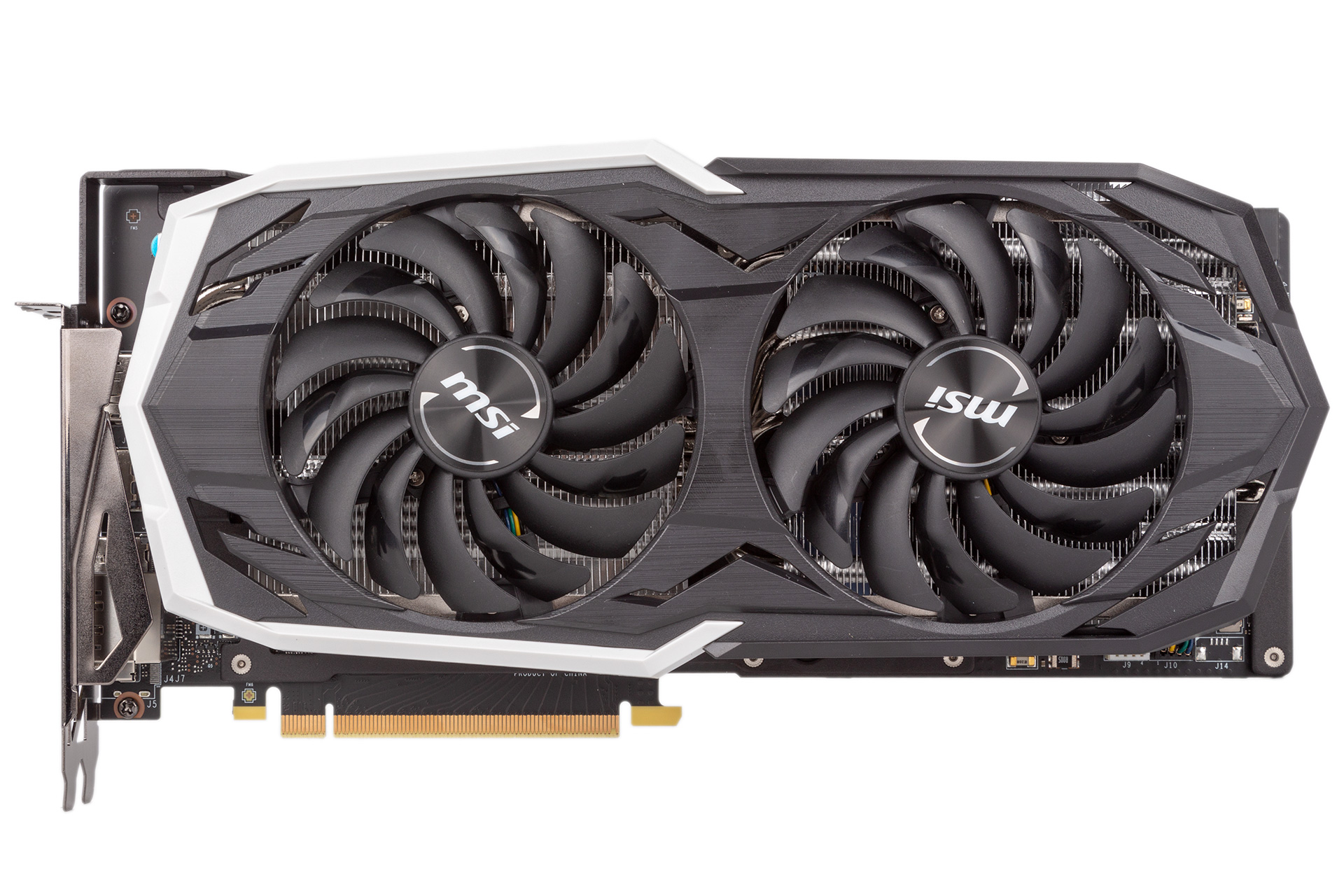
MSI has switched to Torx 3.0 fans on its premium offerings, leaving the Armor with the older-generation Torx 2.0 models. These have been used very successfully on numerous cards before, though, so that’s hardly a concern. You get two of them, each with the usual alternating blade design (one for increasing airflow, one for optimising direction), 14 blades in total, and double ball bearings. With Zero Frozr support, the fans will switch off entirely whenever the GPU is below 60°C.
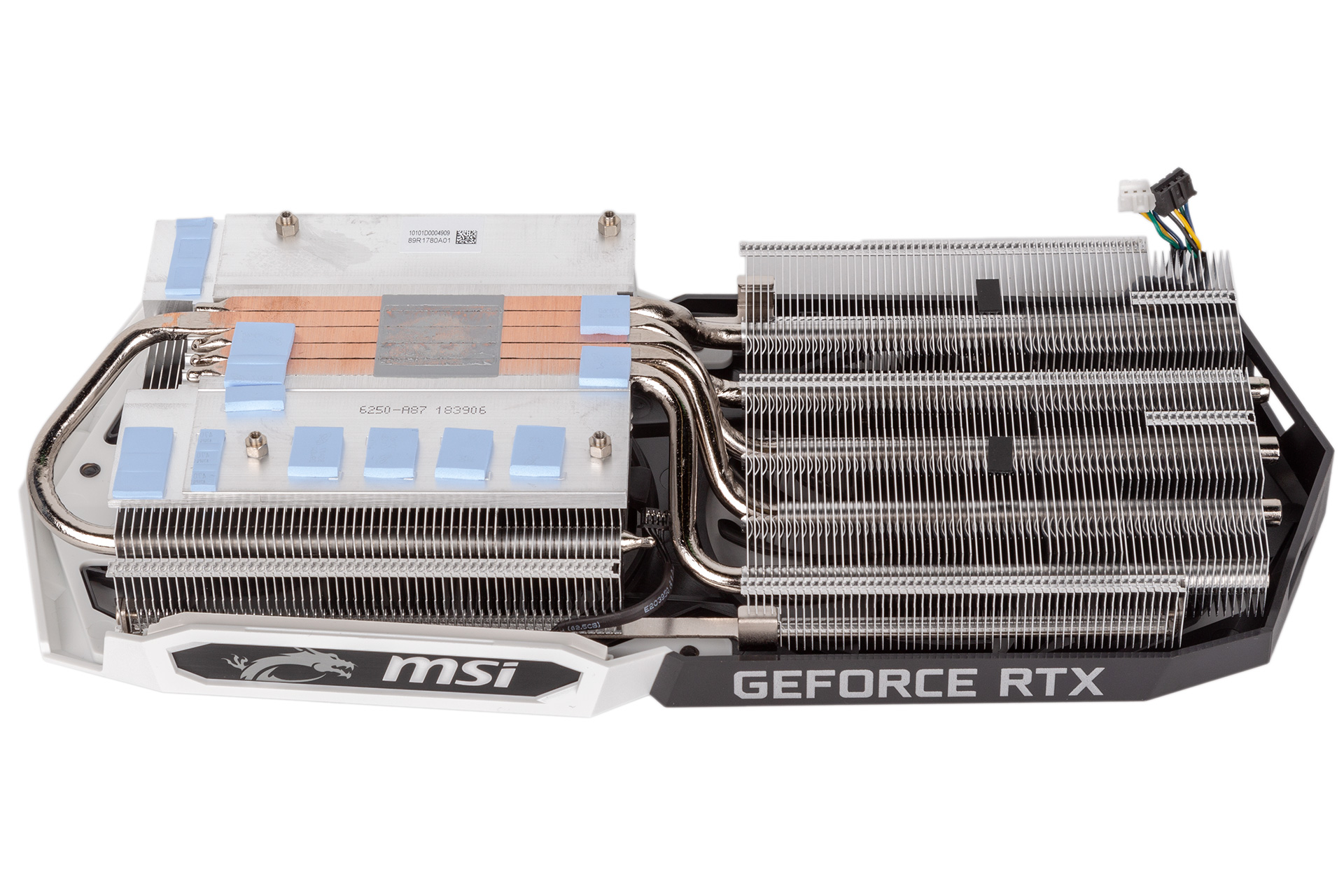
Pleasingly, the backplate uses thermal pads to draw heat away from the rear of the core and memory. Meanwhile, the primary cooler comprises five heat pipes that are squared off and make contact with the GPU through a layer of what MSI calls ‘Premium Thermal Compound’. There are two aluminium fin stacks, and we like that all visible copper has been nickel-plated, as it maintains neutral tones. The heatsink fills the volume of the card well, and it’s directly connected to all memory modules and taller VRM components via thermal pads. Meanwhile, additional VRM circuitry that’s is almost flush with the PCB is cooled by the close-quarters cooling plate. MSI also says it has shaped the fins in a way that will guide airflow efficiently to the heat pipes, so it’ll be interesting to see how it does in terms of thermals.
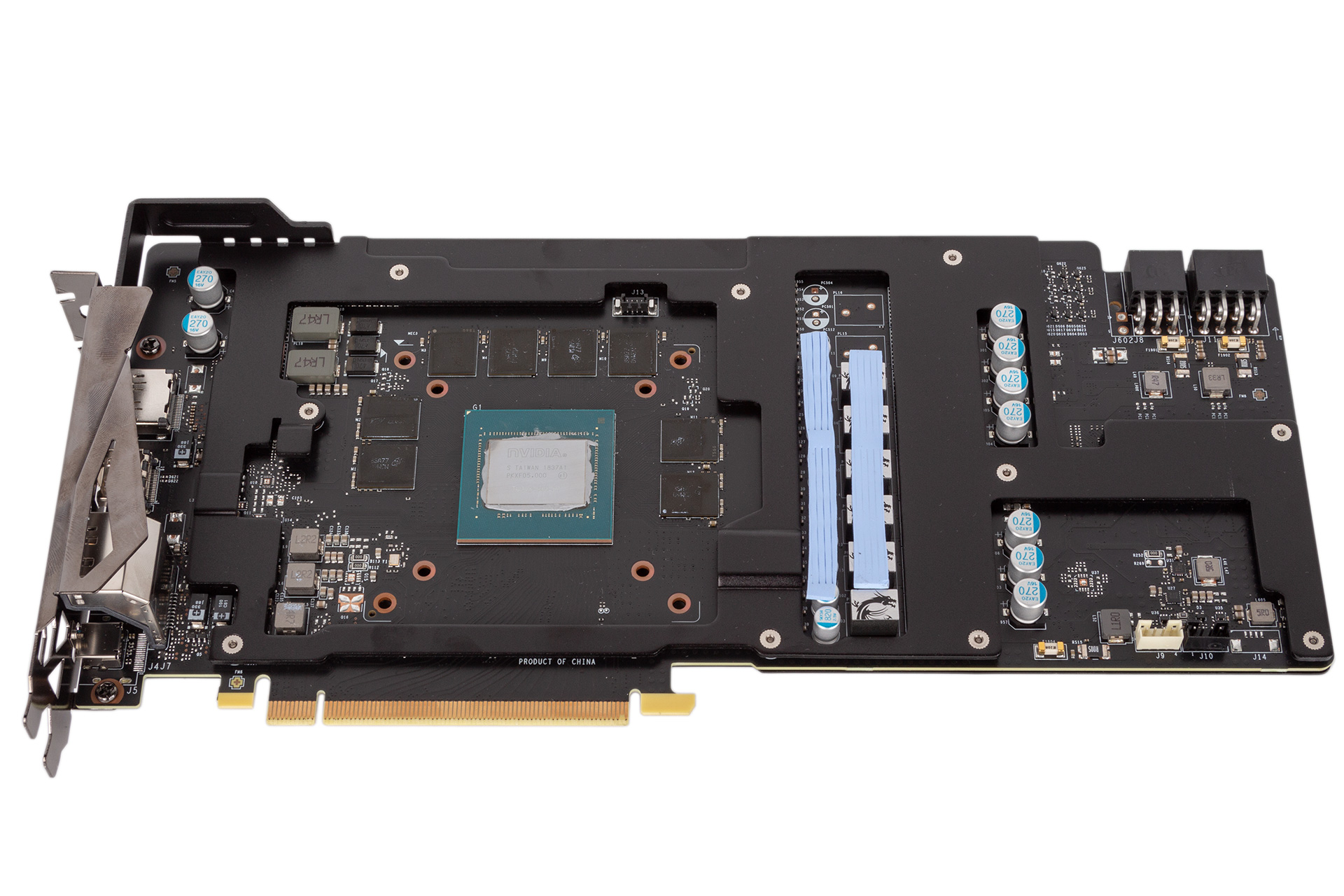
MSI claims to be using ‘beefed up’ circuitry here, but exactly what has been given the bovine treatment isn’t specified. It seems to have opted for a 6+2 phase power delivery on its oversized PCB, which looks very similar to the one used on the RTX 2070 Gaming Z – it even has empty spots where the additional VRM components would go.
Overall the design here is solid all round; time to probe the Armor and find out how it performs where it counts.
Specifications
- Graphics processor Nvidia GeForce RTX 2070, 1,410MHz (1,620MHz boost)
- Pipeline 2,304 stream processors, 288 Tensor Cores, 36 RT Cores, 144 texture units, 64 ROPs
- Memory 8GB GDDR6, 14Gbps effective
- Bandwidth 448GB/s, 256-bit interface
- Compatibility DirectX 12, Vulcan, OpenGL 4.5
- Outputs 3 x DisplayPort 1.4a, 1 x HDMI 2.0b, 1 x USB-C VirtualLink
- Power connections 1 x eight-pin PCIe, 1 x six-pin PCIe, top-mounted
- Size 309mm long, 155mm tall, 50mm deep (~2.5-slot)
- Warranty Two years

MSI MPG Velox 100R Chassis Review
October 14 2021 | 15:04

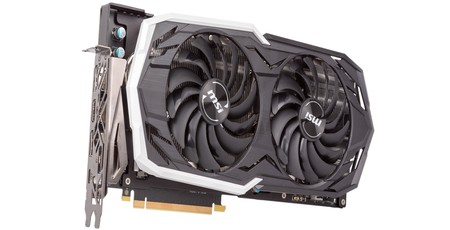


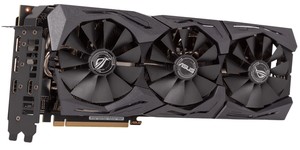




Want to comment? Please log in.